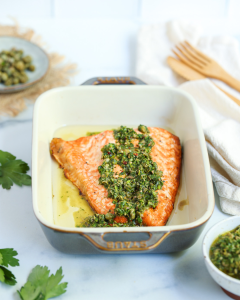Eat Well, Feel Better: A Guide to Healthy Meals
Healthy Eating Is a Lifestyle, Not a Limitation
When most people think of “healthy eating,” they picture restrictive diets or bland salads. But in reality, nourishing your body doesn’t mean cutting everything out—it means choosing food that fuels you, supports your goals, and actually tastes good.
A helpful way to approach this is by following healthy eating patterns—comprehensive frameworks that emphasize choosing a variety of nutritious foods and beverages that fit your personal preferences, cultural traditions, and budget.
Healthy eating is about balance. It’s about making mindful choices to choose foods that are nutritious and that you can sustain over time. Whether you’re optimizing energy, boosting mood, or simply trying to feel better in your body, what you eat plays a central role. Following healthy eating patterns can also help lower risk of heart disease and other chronic conditions.
Why Healthy Eating Patterns Matter
Healthy eating isn’t just about appearance. It supports:
- Better energy and focus throughout the day
- Improved immunity and resilience against illness
- Mood stability and reduced stress levels
- Long-term health, including heart, brain, and hormone function
✅ Explore more on our blog: How to Build a Morning Routine That Supports Testosterone & Mental Clarity
Habits That Make a Difference
Here are simple changes that support better eating:
- Choose whole, unprocessed ingredients as often as possible
- Incorporate healthy fats (like olive oil and fatty fish) for brain and hormone support
- Eat a variety of colorful vegetables for a wide range of nutrients
- Include fresh fruit in your daily diet to help meet the 5 A Day target
- Cook at home more often to control what goes into your meals
Watch Out for Hidden Salt
Common foods like bread can be significant sources of dietary salt. Managing salt intake from everyday foods helps support healthy blood pressure and maintain a balanced diet.
Mindful Eating: Savoring Every Bite
Healthy eating isn’t just what you eat—it’s also how you eat. Mindful eating is about being present during meals and paying attention to your body’s signals.
Creating a Calm Eating Environment
Turn off the TV and put your phone aside. Focus on the textures, colors, and flavors of your food. Sit down with a small glass of water or lemon juice to stay hydrated and centered.
Use Herbs to Reduce Salt
Enhance meals with herbs and spices like garlic powder, smoked paprika, and lemon pepper instead of adding extra salt.
Mix and Match Food Groups
A balanced meal includes whole grains, lean proteins, vegetables, fruits, and healthy fats. This diversity from each food group ensures that you’re nourishing your body completely.
Healthy Cooking Oils
Use olive oil or extra virgin olive oil when cooking salmon or vegetables. These provide unsaturated fats that support heart health and help lower risk of developing heart disease.
Smart Beverage Choices
Choose water or drinks low in sugar. Avoid drinks high in saturated fat and added sugar to support healthy eating patterns.
Safe Food Storage
Store leftover salmon or other cooked meals in an airtight container. Reheat leftovers to at least 165°F (74°C) before eating. Keep them in the fridge overnight for freshness.
Try New Ingredients
Experiment with different foods and cooking methods—including whole wheat pasta, green beans, or brown rice—to add variety and nutrients to your meals.
Balanced Meals Support Health
Meals rich in fiber, vitamins, and minerals—and low in added sugars, saturated fat, and sodium—nourish your body and help manage blood pressure and reduce the risk of heart disease.
Recipe Highlight: Baked Salmon with Salsa Verde
Healthy meals should be just as enjoyable as they are good for you. This baked salmon recipe is rich in omega-3s, herbs, and flavor. It fits perfectly into a low fat diet and supports a balanced diet.
Benefits of Salmon
Salmon is a lean meat and an excellent source of protein and omega-3 fatty acids. It’s lower in cholesterol compared to some other meats and supports heart and brain health.
️ Salmon with Salsa Verde
Serves: 2–3 | Prep Time: 15 mins | Cook Time: 25 mins
Ingredients
- 1.5 lbs. (680g) skinless salmon fillet
- 1 medium lemon
- 1 oz. (30g) fresh parsley
- 0.5 oz. (15g) fresh basil
- 3 tbsp. capers
- 1 clove garlic
- 3 tbsp. olive oil (plus 1 tsp. for dish)
- ¼ tsp. red pepper flakes
- Salt and black pepper, to taste
- Optional: 1–2 tbsp. unsalted butter
- Optional: 1 tbsp. honey
Baking Instructions
- Preheat oven to 300°F (150°C). Drizzle 1 tsp. olive oil in a baking dish.
- Pat salmon dry and season with salt and black pepper.
- Place salmon skin-side down and zest half the lemon over it.
- Bake uncovered for 20–25 minutes, until just cooked through.
Making the Salsa Verde
- Finely chop parsley and basil.
- Add capers and garlic, continue chopping.
- Transfer to a small bowl.
- Zest and juice the remaining lemon, then mix in olive oil and red pepper flakes.
- Add honey or butter if desired. Stir and season to taste.
Serving Suggestions
Serve salmon with steamed vegetables, brown rice, or roasted potatoes for a balanced meal.
Tip: This recipe also works great in an air fryer.
Why You’ll Love It
This dish is flavorful, heart-healthy, and quick to prepare. It’s perfect for weeknights or entertaining guests. It’s low in saturated fat and high in unsaturated fats—supporting weight management and overall well-being.
In Closing
Healthy eating isn’t about sacrifice—it’s about celebration. Choose foods that nourish and energize you. Start small, stay consistent, and enjoy meals that support your goals. Whether it’s cooking salmon or experimenting with green beans and whole grains, every small choice matters.
Check out Centrapeak on how you can add to your healthy lifestyle with a great male supplements.
